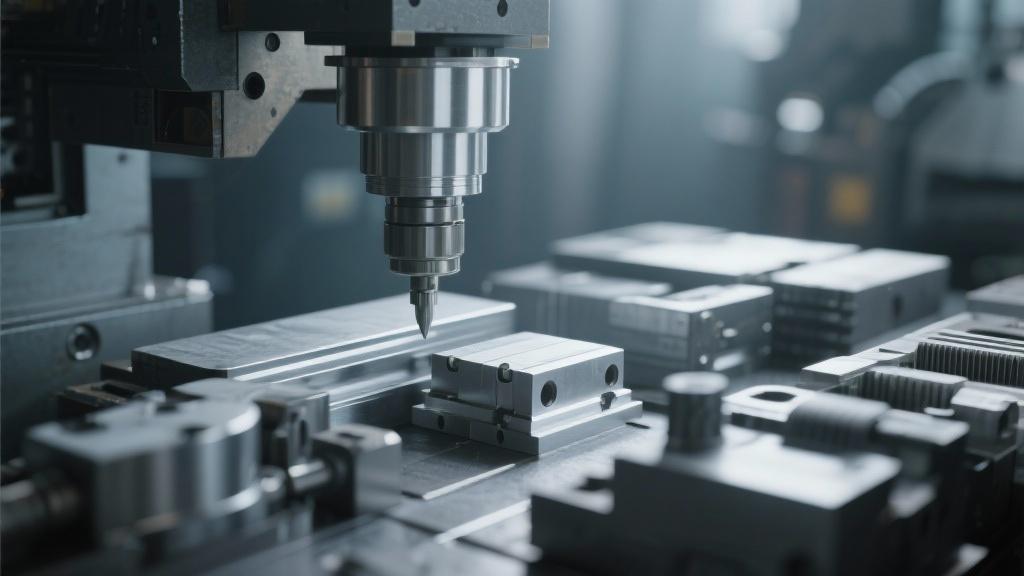Answer: When it comes to aluminum machining, understanding the common defects you might encounter can make a significant difference in your production quality. It’s not just about understanding how to operate machines; it’s about knowing what can go wrong and how to prevent those issues from escalating.
One of the most frequent defects seen in aluminum machining is surface roughness. This can happen for many reasons, such as using dull tools or improper cutting speeds. If your finished product isn’t smooth to the touch, it can lead to problems down the line, especially if it’s being used in applications where precision is key. You might want to consider regularly checking your tools and adjusting your machine settings to optimize performance.
Dimensional inaccuracies are another major concern. If the parts you’re producing don’t meet the specified measurements, it can lead to assembly issues or even complete product failure. This often boils down to how well you’re calibrating your machines and checking your work regularly. Implementing regular quality control checks can significantly mitigate this risk.
Tool wear is also a big issue. Over time, tools can become less effective and lead to more defects in the machining process. A good practice is to keep an eye on your tools and replace them before they become an issue. This is especially important in high-volume production environments where even small inaccuracies can add up to significant problems.
Another common defect is contamination, which can come from various sources, including chips, cutting fluid, or dirt. Keeping your workspace clean and using filtration systems can help minimize this risk.
In this article, we’ll explore these defects in detail, offering insights into their causes and presenting actionable solutions. Whether you’re optimizing an existing process or venturing into aluminum machining for the first time, understanding these factors is essential for producing high-quality parts.
By being proactive and understanding the intricacies of aluminum machining, you’ll set yourself up for success and avoid some common pitfalls that can lead to costly rework or lost time. So, let’s dive deeper into each of these common defects and arm you with the knowledge you need to navigate this vital part of manufacturing.
What are the most common defects in aluminum machining?
In aluminum machining, some of the most frequent defects include surface roughness, dimensional inaccuracies, and tool wear. Each of these defects can arise from various issues, such as improper tooling, machine settings, or contamination. By understanding these common problems, you can implement strategies to minimize their occurrence.

Surface roughness often results from using dull tools or incorrect cutting speeds, while dimensional inaccuracies might be linked to poor calibration of machines. Identifying these defects early on can help maintain production quality.
How can I prevent surface roughness in aluminum parts?
To prevent surface roughness in your machined aluminum parts, regularly inspect and sharpen your cutting tools, and ensure you’re using the appropriate cutting speeds. A clean workspace is also essential, as contaminants can affect the finish of your parts.
Additionally, experimenting with different machining techniques and tools can help you achieve a smoother finish. Don’t hesitate to adjust your parameters until you find the right combination that works for your specific application.
What should I do if I encounter dimensional inaccuracies?
If you notice dimensional inaccuracies in your products, it’s crucial to first check your machine calibration. Regular calibration can dramatically reduce errors and ensure that your parts meet the desired specifications.
In addition, implementing quality control checks throughout the machining process will help catch these inaccuracies early on, allowing you to make necessary adjustments before finishing the parts.
How does tool wear affect machining quality?
Tool wear can significantly impact the quality of your machined parts. As tools dull over time, they may lead to increased surface roughness and dimensional inaccuracies. It’s essential to monitor your tools closely and replace or resharpen them as needed to maintain optimal performance.
By keeping an eye on the condition of your tools, you can avoid quality issues and ensure smoother, more consistent results in your aluminum machining operations.
What impact does contamination have on aluminum machining?
Contamination can cause significant defects in aluminum machining, leading to issues like surface imperfections and inconsistent finishes. Sources of contamination can include chips, incorrect cutting fluids, and even dirt from the workspace.
Maintaining a clean machining environment and using proper filtering systems can help minimize contamination risks. Regular cleaning of your tools and machines is also a good practice to keep your components free of any unwanted particles that may affect their quality.



